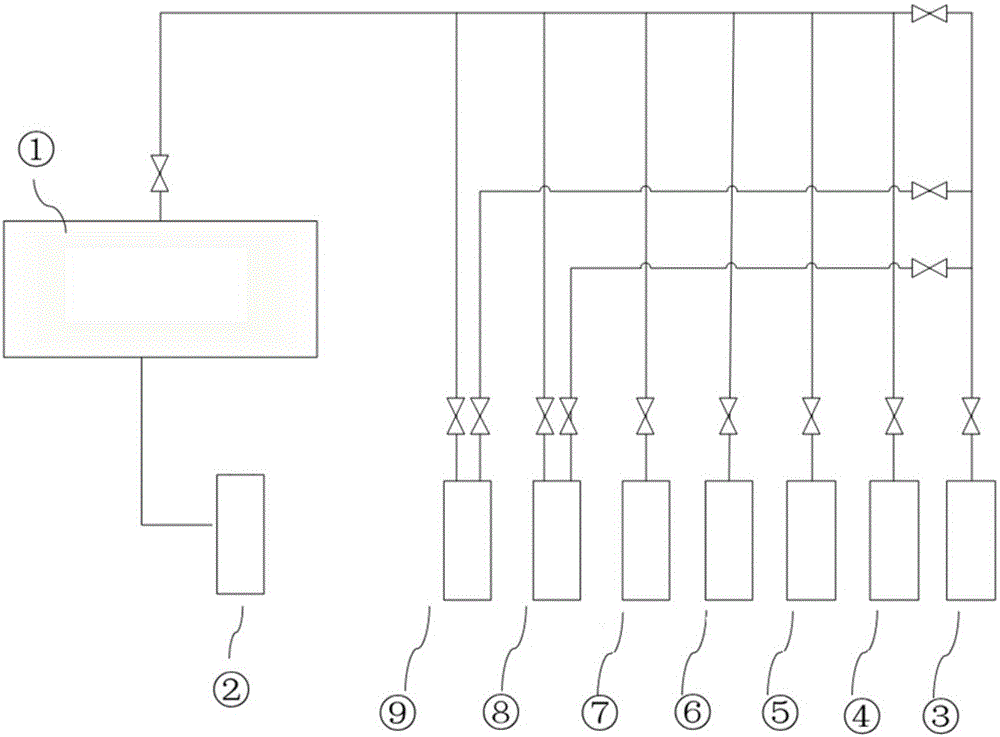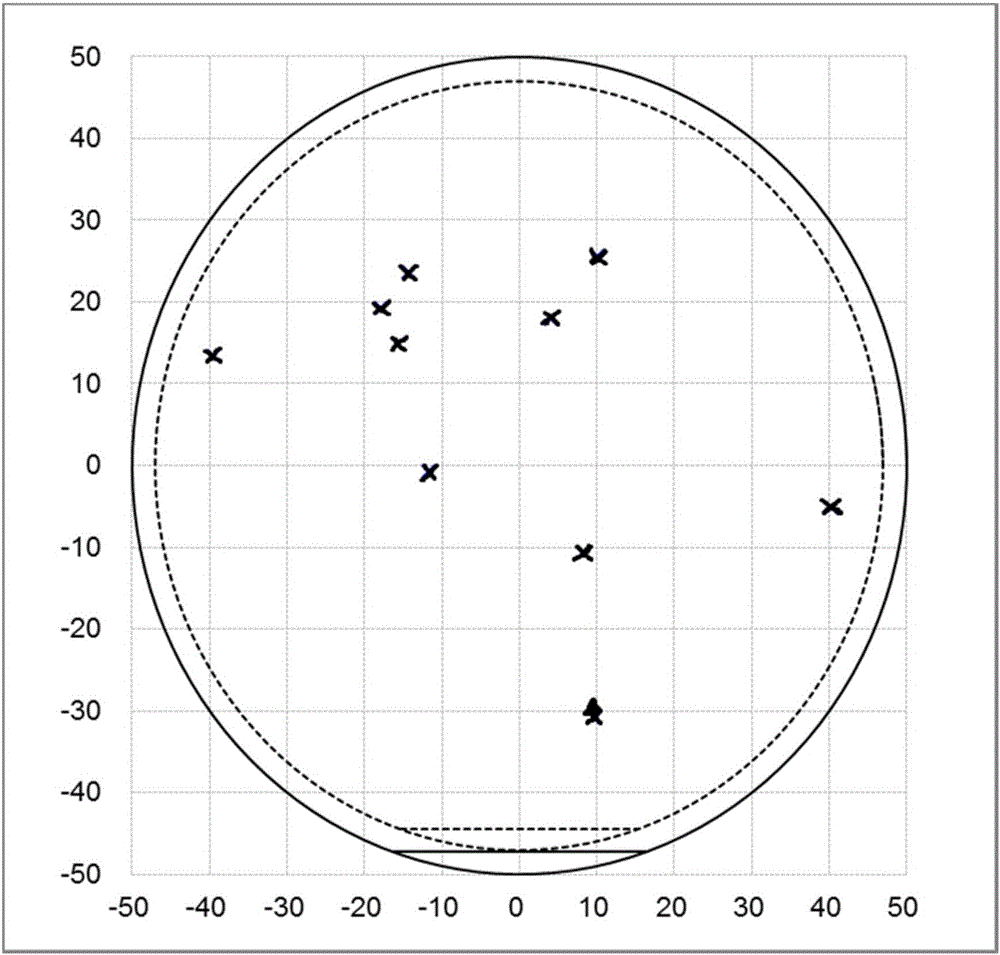Silicon carbide epitaxial growth system and growth method thereof
An epitaxial growth, silicon carbide technology, applied in chemical instruments and methods, crystal growth, single crystal growth and other directions, can solve the problems of inability to grow thick films, single system, etc., to achieve fewer defects, simple growth methods, and good process repeatability Effect
- Summary
- Abstract
- Description
- Claims
- Application Information
AI Technical Summary
Problems solved by technology
Method used
Image
Examples
Embodiment 1
[0041] a N + A method for preparing an NP-type silicon carbide epitaxial wafer with a low defect thickness, comprising the following steps:
[0042] 1) Heating and heating: fill the vacuum reaction chamber 1 with hydrogen gas of 3 to 40,000 Pa, and raise the temperature to 1550°C;
[0043] 2) On-line etching of the substrate: prepare a substrate made of 4H-SiC, vacuumize it, and feed in hydrogen gas 3 with a flow rate of 40L / min and hydrogen chloride 7 with a flow rate of 5L / min. The pressure in the reaction chamber is 40mbar and the temperature is 1680°C. Maintain for 3 minutes;
[0044] 3)N + Growth of type buffer layer: stop feeding hydrogen chloride 7, lower the temperature to 1650°C, feed silane 6 at a flow rate of 6mL / min and ethylene 5 at a flow rate of 3mL / min, and use nitrogen gas 4 at a flow rate of 1500mL / min as a dopant to grow The pressure is 40mbar, and a 0.4μm thick buffer layer is grown;
[0045] 4) Growth of N-type thick film epitaxial layer: Pass hydrogen...
Embodiment 2
[0049] a N + A method for preparing an NNP type low-defect silicon carbide epitaxial wafer, comprising the following steps:
[0050] 1) Heating and heating: fill the vacuum reaction chamber 1 with hydrogen gas of 3 to 40,000 Pa, and raise the temperature to 1400°C;
[0051] 2) On-line etching of the substrate: prepare a substrate made of 4H-SiC, vacuumize it, and feed in hydrogen gas 3 with a flow rate of 40L / min and hydrogen chloride 7 with a flow rate of 5L / min. The pressure in the reaction chamber is 40mbar and the temperature is 1680°C. Maintain for 5 minutes;
[0052] 3)N + Growth of type buffer layer: stop feeding hydrogen chloride 7, lower the temperature to 1650°C, feed silane 6 at a flow rate of 6mL / min and ethylene 5 at a flow rate of 3mL / min, and use nitrogen gas 4 at a flow rate of 1500mL / min as a dopant to grow The pressure is 40mbar, and a 0.4μm thick buffer layer is grown;
[0053] 4) Growth of N-type thin film epitaxial layer: feed silane 6 at a flow rate o...
Embodiment 3
[0058] a N + A method for preparing an N-type low-defect silicon carbide epitaxial wafer, comprising the following steps:
[0059] 1) Heating and heating: fill the vacuum reaction chamber 1 with hydrogen gas of 3 to 40,000 Pa, and raise the temperature to 1000°C;
[0060] 2) On-line etching of the substrate: prepare a substrate made of 4H-SiC, vacuumize it, and feed in hydrogen gas 3 with a flow rate of 40L / min and hydrogen chloride 7 with a flow rate of 5L / min. The pressure in the reaction chamber is 40mbar and the temperature is 1680°C. Maintain for 10 minutes;
[0061] 3)N + Growth of type buffer layer: stop feeding hydrogen chloride 7, lower the temperature to 1650°C, feed silane 6 at a flow rate of 6mL / min and ethylene 5 at a flow rate of 3mL / min, and use nitrogen gas 4 at a flow rate of 1500mL / min as a dopant to grow The pressure is 40mbar, and a 0.4μm thick buffer layer is grown;
[0062] 4) Growth of N-type thick film epitaxial layer: Pass hydrogen 3 at a flow rate...
PUM
 Login to View More
Login to View More Abstract
Description
Claims
Application Information
 Login to View More
Login to View More - R&D
- Intellectual Property
- Life Sciences
- Materials
- Tech Scout
- Unparalleled Data Quality
- Higher Quality Content
- 60% Fewer Hallucinations
Browse by: Latest US Patents, China's latest patents, Technical Efficacy Thesaurus, Application Domain, Technology Topic, Popular Technical Reports.
© 2025 PatSnap. All rights reserved.Legal|Privacy policy|Modern Slavery Act Transparency Statement|Sitemap|About US| Contact US: help@patsnap.com



